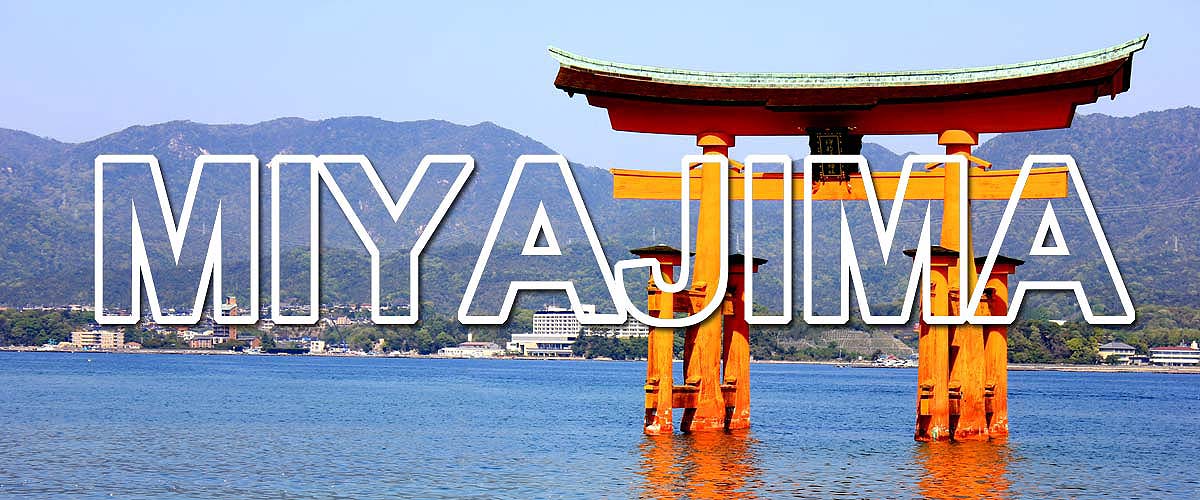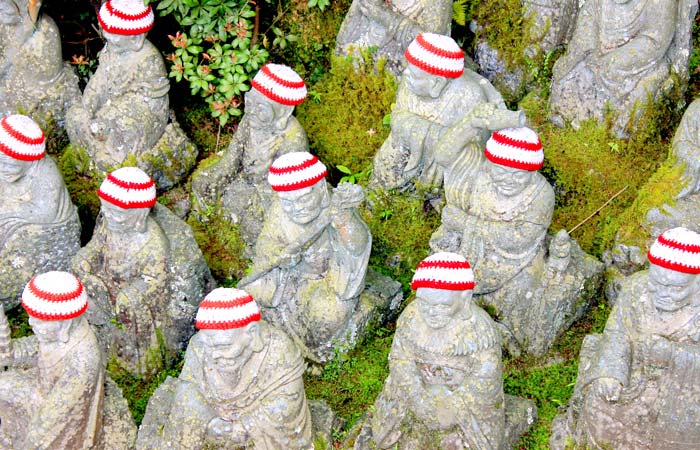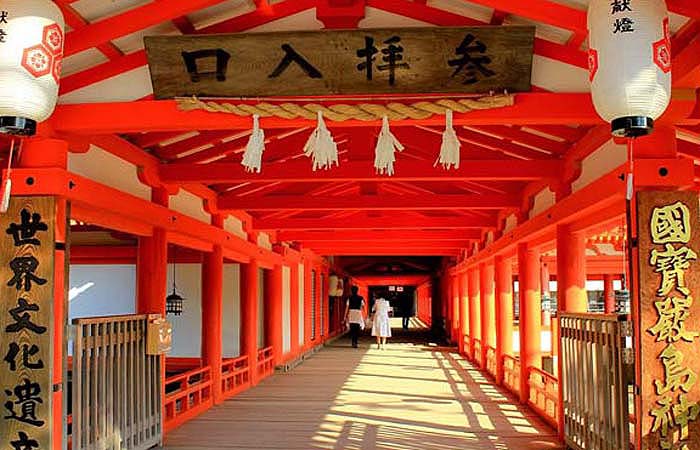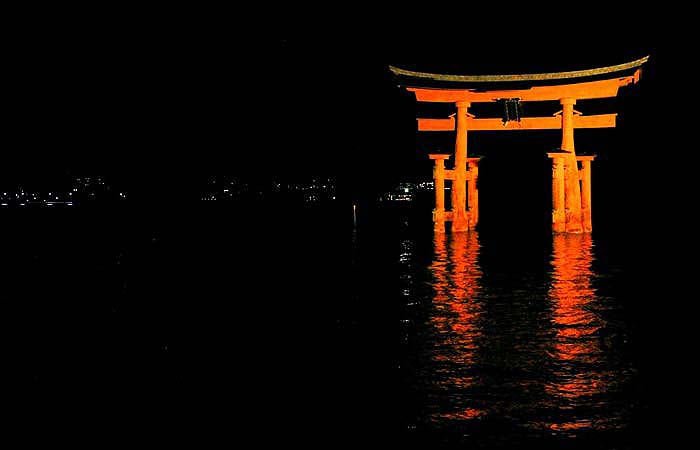


Colourful flags flank the stairway to Daishoin Temple. Carved scenes of Buddha decorate both ends of the banister. Visitors rotate the railing’s cylinders for good luck as they walk up the stairs. Unique statues embellish the ground below. Each one has a different expression and wears a knitted striped hat. The temple complex is compact yet captivating. There are numerous statues of all sizes hidden amongst stones in the gardens. The temples and gardens are exquisite. Daishoin Temple is a peaceful hideaway nestled in the mountains.

The initial view of this magnificent shrine is on arrival by ferry from the mainland. This vermillion lacquered shrine on stilts is a UNESCO World Heritage Site, first built in 593 and rebuilt in 1168. The corridors are striking and provide visual delights from various perspectives. Along the corridors discover sake barrels, lanterns dangling from the beams, the treasury and the Soribashi, a steeply arched bridge. Sit on the old Noh Stage and gaze out to the sea, watching the torii gate change with the tides. As the sun starts to set and the tide comes in, the Itsukushima Shrine seems to float on the sea. Its reflection dances on the rippling waters and the stone lanterns along the shoreline light up at night.
en.itsukushimajinja.jp/index.html

The vermillion torii gate floating on the sea is an iconic image of Japan. It symbolises the gateway to Japan. The Floating Torii Gate takes on a new personality with the changing times of day. People walk across the stepping stones in the sand at low tide when the torii gate is completely visible. Slowly as the sun sets, the waters rise till the base of the torii is no more and a reflection appears against the ripples as the waves ebb and flow. At night the Floating Torii Gate lights up. It is a vision of ever-changing beauty.

Board the Miyajima Ropeway which has two rope systems, circulating and funicular. You can also hike up the mountain. Look below to the lush primeval forest as you climb higher up Mount Misen, a UNESCO World Heritage Site. Flora and fauna are protected and preserved here. Panoramic views of Miyajima and islands in the distance are stunning on a clear day.